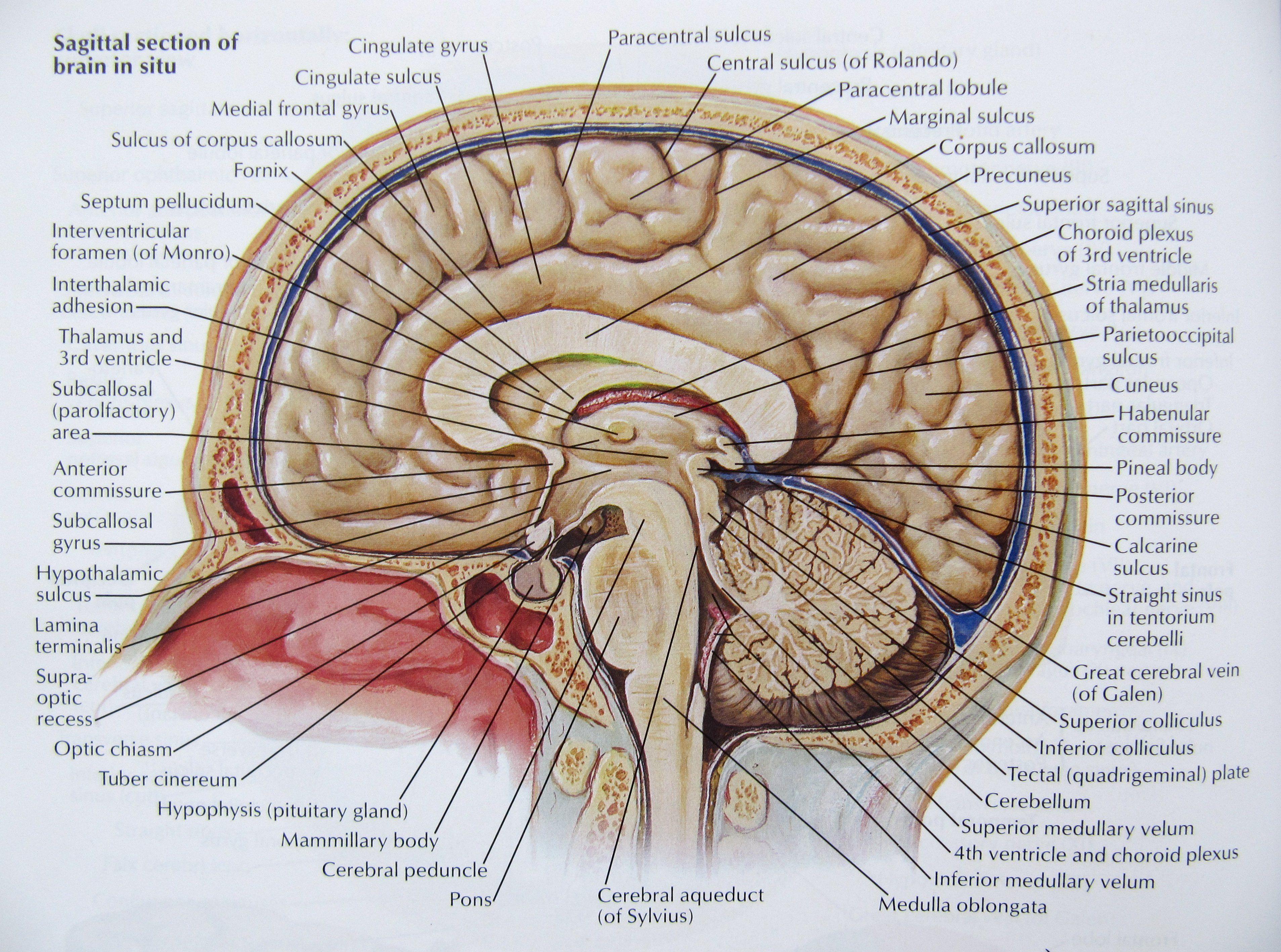
Most of the expansion comes from the cerebral cortex, especially the frontal lobes, which are associated with executive functions such as self-control, planning, reasoning, and abstract thought. Estimates for the number of neurons ( nerve cells) in the human brain range from 80 to 120 billion. It has the same general structure as the brains of other mammals, but is larger than expected on the basis of body size when compared to other primates. The human brain is the center of the human nervous system. Lesions of the hypothalamus interfere with several vegetative functions and some behaviors, such as sexuality, combativeness, and hunger. In humans, it is the largest part of the brain and the seat of motor and sensory functions, as well as higher mental functions such as consciousness, thought, reason, emotion, and memory.

The seahorse-shaped hippocampus is responsible for memory.Each of the two hemispheres is divided into four separate lobes: the frontal (control of specialized motor control, learning, planning, and speech) parietal (control of somatic sensory functions) occipital (control of vision) and temporal lobes (control of hearing and some speech).The brain stem consists of the midbrain, pons, and medulla.The brain is protected by the thick bones of the skull, suspended in cerebrospinal fluid, and isolated from the bloodstream by the blood-brain barrier.Thalamus: A major relay station between the senses and the cortex (the outer layer of the brain consisting of the parietal, occipital, frontal and temporal lobes). Temporal Lobe: Processes hearing, memory and language functions.

It also is involved in the coordination of eye movements and balance. Pons: Contains centers for the control of vital processes, including respiration and cardiovascular functions. Reading and arithmetic are also processed in this region. Parietal Lobe: Receives and processes information about temperature, taste, touch, and movement coming from the rest of the body. Parahippocampal Gyrus: An important connecting pathway of the limbic system. Occipital Lobe: Helps process visual information.

Limbic System: A group of interconnected structures that mediate emotions, learning and memory. Medulla Oblongata: Contains centers for the control of vital processes such as heart rate, respiration, blood pressure, and swallowing.

Hippocampus: Plays a significant role in the formation of long-term memories. It is part of a system that processes "reflexive" emotions like fear and anxiety.Ĭingulate Gyrus: Plays a role in processing conscious emotional experience.įornix: An arch-like structure that connects the hippocampus to other parts of the limbic system.įrontal Lobe: Helps control skilled muscle movements, mood, planning for the future, setting goals, and judging priorities. Glossary of TermsĪmygdala: Limbic structure involved in many brain functions, including emotion, learning and memory. The hippocampus is one of the first areas affected by Alzheimer's disease. As the disease progresses, damage extends throughout the lobes. The limbic system consists of a number of structures, including the fornix, hippocampus, cingulate gyrus, amygdala, the parahippocampal gyrus, and parts of the thalamus. The image on the right is a side view showing the location of the limbic system inside the brain. The image on the left is a side view of the outside of the brain, showing the major lobes (frontal, parietal, temporal and occipital) and the brain stem structures (pons, medulla oblongata, and cerebellum).


 0 kommentar(er)
0 kommentar(er)
